10 Facts for Why Natural Gas Vehicles and Renewable Natural Gas Should Be Part of California’s Clean Air & Climate Strategy
Download the “Guiding Principles” PDF
Air Pollution Impacting Public Health
Air pollution presents serious immediate health impacts to California residents, especially to those living in disadvantaged communities.
Living in areas with poor air quality—such as areas along major freeways and freight corridors—increases the risk of many adverse health outcomes including: lost school and work days, lung and heart disease, birth defects, and premature death.
Commercial Trucks are a Major Source of Air Pollution
Existing heavy-duty diesel trucks are some of the most significant contributors to harmful air pollution in California. The reduction of diesel exhaust emissions presents one of the best opportunities to protect human health in California.
California’s air quality agencies have indicated that achieving existing, health-based ambient air standards will require the rapid, large-scale replacement of heavy-duty diesel vehicles with equipment that meets, or exceeds CARB’s most stringent, optional low-NOx emissions standard (i.e. 0.02 g/bhp-hr NOx).5
GHG Emissions on the Rise
Greenhouse gas (GHG) emissions from transportation are currently rising in California.4
While the state’s total GHG inventory continues to decrease, GHG emissions from transportation have increased. The transportation sector remains the largest source of GHG emissions in the state, accounting for 40% of statewide emissions in 2017.4 Reducing transportation GHG emissions is necessary to achieve California’s existing climate action mandate, including meeting GHG emission reductions mandated in SB 32.
A Growing Climate Crisis
California is increasingly impacted by the growing climate crisis. Immediate and aggressive action is needed and required by state law.
California is experiencing the impact of climate change now. California’s coastal sea levels are rising, threatening people, property, and infrastructure. The state’s critical snowpack, which supports California’s water supply, is melting earlier and all at once. Higher temperatures and extreme heat days across the state are stressing California’s aging electricity grid and fueling wildfires which start earlier, last longer, and burn more intensely than they have in decades.6
Targeting Methane Emissions
The immediate reduction of fugitive methane emissions is necessary to rapidly reduce the impacts of climate change.
About 25% of man-made global warming is caused by methane emissions. Methane has up to 87 times the global warming potential of C02 in the first twenty years after its release.7 Nearly 50% of methane emissions in California come from organic waste decomposing in landfills and livestock manure. Both sources of methane could be captured and converted into renewable natural gas and other transportation fuels, as well as used in industrial applications and decarbonizing buildings8. Additionally, robust maintenance and monitoring systems are necessary to limit methane leakage.
Maximizing Co-Benefits
California’s climate policies and incentives should drive maximum environmental impact while ensuring that businesses in the state can continue to thrive.
California has the opportunity to fund projects that enable the state to address multiple policy objectives while o ering new revenue streams to businesses (e.g., capturing methane from dairy manure and converting it into renewable natural gas that can be sold as an ultra-low carbon transportation fuel or used to produce hydrogen or electricity, and providing revenue back to the dairy family to set the costs of methane capture).
No One Technology Fits All
There is currently no “one size fits all” vehicle technology that will meet the needs of all California on-road fleet operators.
California’s fleet operators—including transit, delivery, goods movement, agriculture, construction, schools, utilities, refuse collection, and public works—have a diverse set of operating conditions that require a diverse set of transportation solutions.
Limited Funding Dollars
California does not have the means to publicly fund the replacement of every medium- and heavy-duty vehicle in the state.
The available public funding assistance intended to facilitate a transition to cleaner transportation technologies is inadequate to achieve existing emission reduction mandates on its own (e.g., existing federal, state, and local vehicle replacement grant and rebate programs). It will require a combination of incentives, regulations, and other innovative strategies to help transform California’s heavy-duty vehicle fleet.
Supporting Cost-Effective and Transformational Technology Solutions
It is critical to maximize cost-effective emission reductions in the near-term while reducing the cost of early stage advanced technologies in the long-term.
A portfolio of near-zero and zero-emission vehicle technologies will all play important roles in California’s clean transportation future. This approach will help maximize cost-effective emission reductions in the near-term, as well as reduce the cost of earlier stage advanced vehicle technologies for greater emission reductions in the long-term. Advanced vehicle technology costs vary by manufacturer, model, and fuel type. Additionally, different technologies are at different stages of commercialization. Some technologies are commercially available today while some are still in the development and testing stage.
Spurring Innovation
Market competition among transportation technology solution providers leads to improved operational, environmental, and cost performance.
Promoting competition within the marketplace would accelerate technology innovation, performance, and cost reductions.
CNGVP Member Organizations

Sources:
1: US EPA, Nonattainment Areas for Criteria Pollutants, “Green Book” 2019. https://www.epa.gov/green-book
2: American Lung Association, “State of the Air” Report 2019. https://www.lung.org/local-content/_content-items/about-us/media/press-releases/20th-sota-ca.html
3: Game Changer Report, April 2016. https://ngvgamechanger.com/pdfs/GameChanger_FullReport.pdf
4: California Air Resources Board, 2017. https://ww3.arb.ca.gov/cc/inventory/pubs/reports/2000_2017/ghg_inventory_trends_00-17.pdf
5: South Coast Air Quality Management District, Air Quality Management Plan: Chapter 4, 2016. http://www.aqmd.gov/docs/default-source/clean-air-plans/air-quality-management-plans/2016
6: State of California, Department of Justice, 2019. https://oag.ca.gov/environment/impact
7: US EPA, Global Warming Potentials, 2019. https://www.epa.gov/ghgemissions/understanding-global-warming-potentials
8: California Air Resources Board, 2017. https://ww3.arb.ca.gov/cc/inventory/background/ch4.htm









